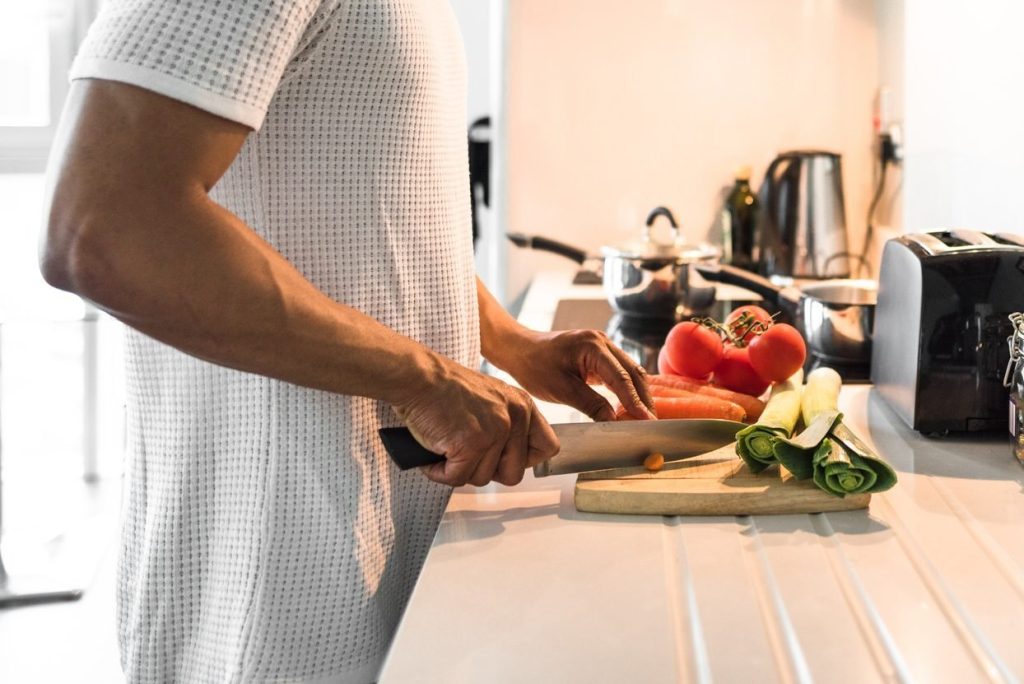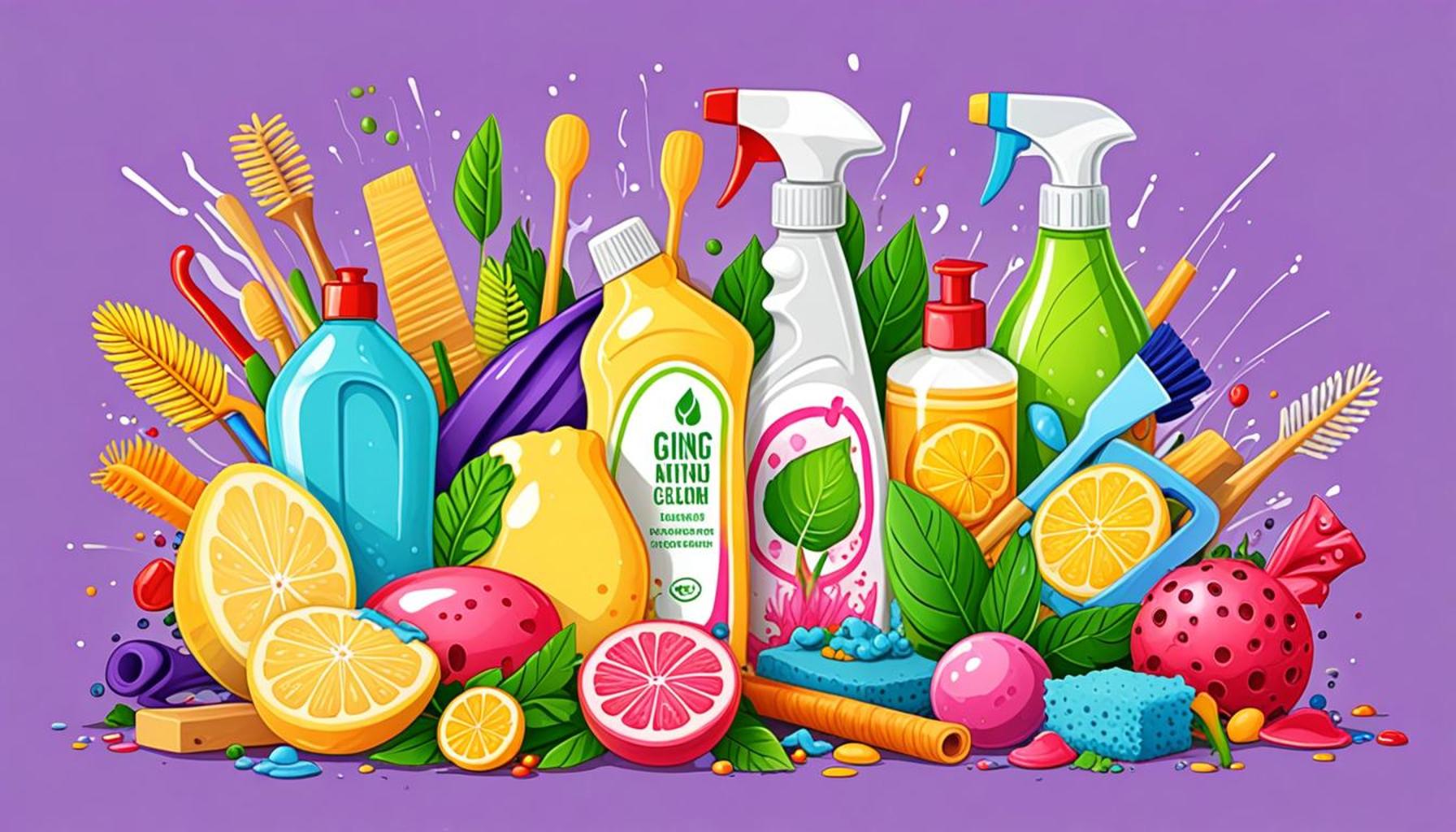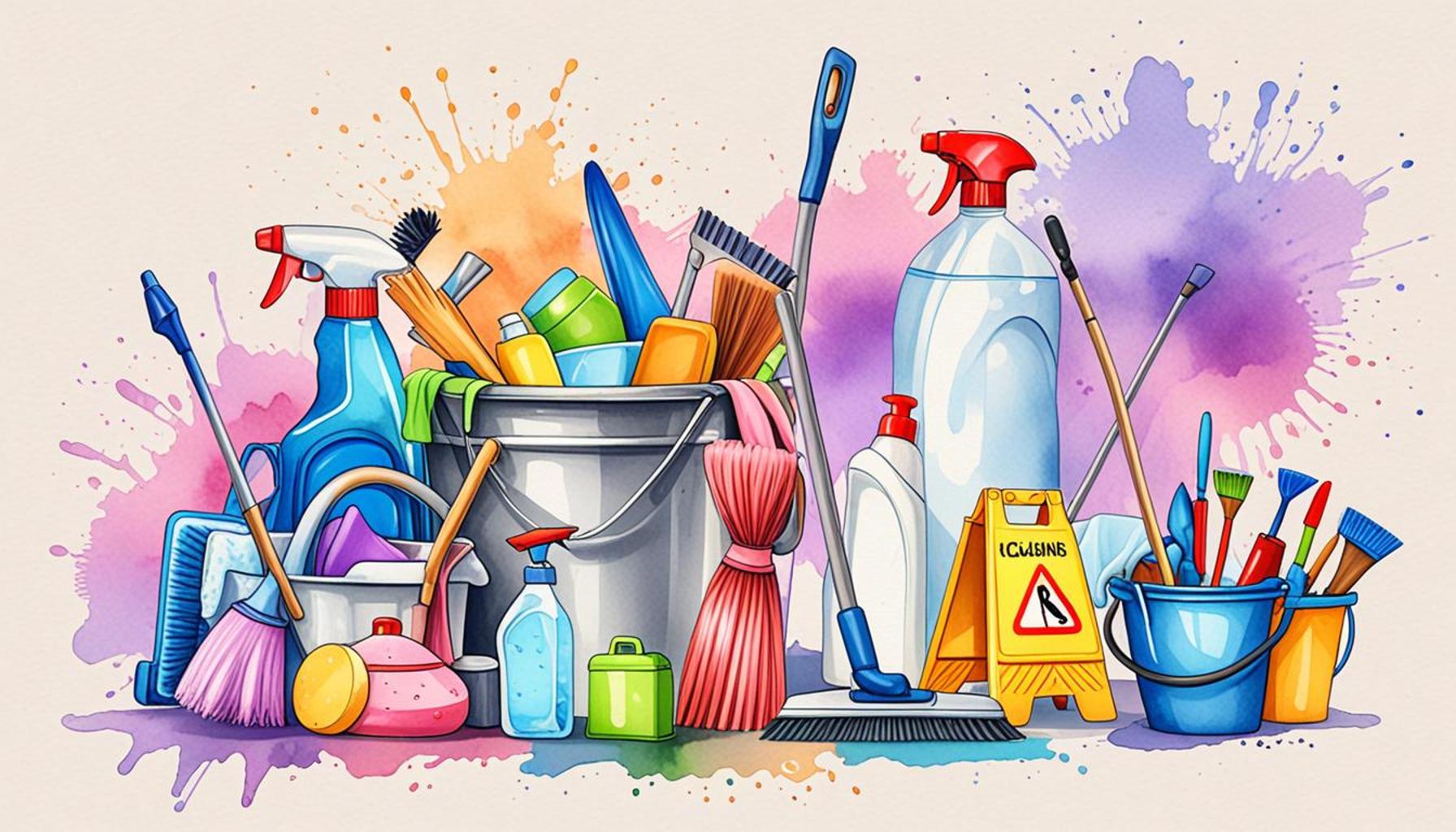Cleaning Techniques for Kitchen Utensils: Ensuring Food Safety and Hygiene in Food Preparation

Importance of Cleaning Kitchen Utensils
Maintaining cleanliness in the kitchen is not just about aesthetics; it is a vital component of food safety and hygiene. The kitchen is often considered the heart of the home or any food establishment, where flavors mingle, and meals are prepared with love. However, it is also a breeding ground for bacteria if proper hygiene practices are not adhered to. Dirty utensils can lead to cross-contamination and foodborne illnesses, which are a significant concern in the United States, where the CDC estimates that 48 million people suffer from food-related illnesses each year.
The significance of understanding the best cleaning techniques cannot be overstated. A clean environment enhances the taste of food—nobody enjoys a meal that has been prepared using contaminated tools—while protecting everyone from potential health risks. Let’s explore some critical factors to consider when cleaning kitchen utensils:
- Material Matters: Kitchen utensils come in various materials, each demanding specific care. For instance, stainless steel is resistant to rust and stains but requires regular polishing to maintain its shine. Conversely, plastic can absorb odors and stains; therefore, it must be sanitized thoroughly. Wooden utensils, while durable and often aesthetically pleasing, require careful cleaning with mild detergents and should never be soaked in water for extended periods to prevent warping.
- Frequency: Cleaning kitchen utensils after each use is paramount. For example, knives used to slice raw meat should not be used again until they are thoroughly washed to avoid cross-contaminating fruits or vegetables you may prepare next. It’s advisable to create a routine that encourages immediate dishwashing after cooking sessions, thus embedding a culture of cleanliness in your culinary habits.
- Cleaning Agents: Not all dish soaps are created equal. Some have antibacterial properties while others are eco-friendly, catering to various preferences and requirements. Research indicates that soap with essential oils like tea tree or citrus can offer additional antimicrobial benefits. It’s worth exploring natural options if you’re concerned about chemical residues on your utensils.
Effective Cleaning Techniques
Various cleaning techniques can effectively eliminate germs and bacteria, ensuring your kitchen remains not just clean but also safe:
- Hot Soapy Water: The age-old method of using hot soapy water is still one of the best ways to remove grease, food particles, and harmful pathogens from kitchen utensils. The hot water enhances soap efficiency, breaking down fats and oils. For optimal results, a temperature above 140°F is generally recommended.
- Vinegar and Baking Soda: For those who prefer natural cleaning methods, a mixture of vinegar and baking soda can serve as an effective disinfectant. This duo not only cleans but also eliminates odors, making it ideal for cutting boards and equipment that have absorbed stronger scents.
- Dishwasher Use: Utilizing a dishwasher for your utensils can enhance hygiene dramatically. The high temperatures (around 140°F) and strong water jets are optimal for killing a majority of germs effectively. Be sure to adhere to the manufacturer’s instructions regarding what materials can safely be placed in the dishwasher.
By investing time in understanding these cleaning techniques and methods, individuals can ensure their culinary spaces remain safe for cooking and dining. With a focus on food safety and hygiene, the kitchen can genuinely be a place where delicious meals are prepared without worry. Are you ready to embark on a journey towards mastering the art of kitchen cleanliness? Dive deeper with us and discover how these practices can transform your cooking experience.
DIVE DEEPER: Click here to uncover more insights

Essential Cleaning Strategies for Kitchen Utensils
Keeping a kitchen clean and safe requires not just regular cleaning routines but also an understanding of the specific requirements for different kitchen utensils. The ability to maintain a hygienic environment is crucial for food safety, as it prevents the transfer of harmful bacteria and contaminants that can lead to foodborne illnesses. By employing certain strategies, you can ensure your kitchen tools remain in prime condition. Here are vital considerations to enhance your cleaning regimen:
- Focus on the Details: It is easy to overlook small nooks and crannies during the cleaning process, but these spaces can become breeding grounds for bacteria. For instance, the blade of a knife often accumulates tiny food particles, while the handles of pots may not receive adequate attention. Using a small brush, such as a toothbrush or a specialized cleaning brush, can help target these hard-to-reach areas and ensure that every surface is sanitized. Additionally, don’t neglect utensils with silicone or rubber components; they can also trap food residues in their creases that may not be visible to the naked eye.
- Separate and Categorize: Cross-contamination is a significant risk in the kitchen, particularly with utensils that come into contact with raw foods. To mitigate this, establish a system for cleaning utensils based on their usage. For example, use color-coded cutting boards—red for raw meat, green for vegetables, and blue for fish. This visual distinction can help prevent mistakenly mixing utensils between raw and cooked foods, which is essential for food safety. Furthermore, designate separate wash basins or rinsing areas if space permits, reinforcing the separation of raw and cooked equipment.
- Temperature Control: The efficiency of your cleaning process can be greatly enhanced by washing utensils in hot, soapy water. Water temperatures above 140°F are optimal as they not only dissolve grease and oils more effectively but also play a crucial role in killing off pathogens. Research indicates that many harmful bacteria, including Salmonella and E. coli, die off quickly in high temperatures, making it paramount to ensure utensils that have come into contact with raw animal products are treated with this method.
- Thorough Drying: After thoroughly cleaning utensils, drying them properly is just as important. Bacteria thrive in moist environments, which makes it critical to dry utensils immediately after washing. Whether you choose to use a clean dish towel or a drying rack for air-drying, ensure that all surfaces are completely dry before storage. This is particularly vital for wooden utensils that can absorb moisture and foster mold growth if not dried adequately.
By implementing these cleaning techniques, you not only create a safer cooking environment but also uphold the health and wellness of those you serve. Each utensil type, whether wood, plastic, or metal, requires specific care practices, and taking the time to understand these nuances can greatly extend the lifespan of your kitchen tools. The next time you are preparing a meal, remember that diligent cleaning efforts enhance not just the appearance of your kitchen but also the safety of the food you prepare. For further exploration, consider looking into the types of cleaning agents best suited for various materials and the significance of their role in maintaining kitchen hygiene.
| Cleaning Method | Advantages |
|---|---|
| Hot Soapy Water | Effectively removes grease and food residues, ensuring a deep clean that helps to reduce bacterial growth. |
| Vinegar Solutions | Natural disinfectant that eliminates odors and is environmentally friendly, promoting safer food handling practices. |
| Bleach and Water | Powerful against bacteria and viruses, ensuring that utensils are sanitized effectively before food prep. |
| Baking Soda Paste | Its gentle abrasive quality makes it suitable for scrubbing surfaces without scratching, enhancing cleaning efficiency. |
When considering cleaning techniques for kitchen utensils, it is essential to understand that ensuring food safety and hygiene is paramount in food preparation. Using methods such as hot soapy water not only eliminates dirt but also diminishes the risk of cross-contamination. Furthermore, vinegar solutions stand out as both a dialogue on sustainability and effective disinfectants, reducing chemical exposure while maintaining hygiene standards. Understanding the science behind cleaning agents informs better practices in the kitchen, encouraging the implementation of safe and reliable techniques. Moreover, utilizing innovative options like baking soda can provide effective scrubbing power without damaging utensils, allowing for a balance between safety and care for kitchen tools. By investing time in proper cleaning methods, individuals can elevate their food industry standards and enhance overall well-being.
DISCOVER MORE: Click here to find out how to optimize your time
Advanced Practices for Utensil Maintenance
While basic cleaning techniques lay the groundwork for kitchen hygiene, diving deeper into advanced practices can yield even greater assurance of food safety. This involves utilizing a variety of cleaning agents, understanding proper sanitization methods, and implementing routine checks to ensure your utensils remain in peak condition. Here’s a look at some of these advanced practices that you can adopt:
- Choosing the Right Cleaning Agents: Not all cleaning solutions are created equal. For instance, when cleaning plastic utensils, dish soap is often sufficient; however, for stainless steel, a solution with a mild abrasive can help eliminate stubborn stains. Bleach solutions diluted to around 1 tablespoon per gallon of water can serve as an effective sanitizing agent, particularly for surfaces that come into contact with raw meats. However, it’s essential to rinse utensils thoroughly after using bleach, as residue can contaminate food. Alternatively, consider using natural agents like vinegar and baking soda; these not only sanitize but also deodorize without any chemicals, making them excellent choices for families concerned about health implications.
- Understanding the Importance of Soaking: For particularly soiled utensils, soaking them in soapy water for 15-30 minutes can significantly ease the later cleaning process. This is especially true for dried-on food particles that may seem impossible to remove with just scrubbing. Additionally, soaking wooden utensils in a vinegar and water solution helps disinfect them while also preventing them from warping. It’s important to monitor the soaking time, as excessive soaking can damage certain materials.
- Investing in Specialized Tools: Consider acquiring specialized cleaning tools tailored for different utensils. For example, silicone spatula cleaners or bottle brushes specifically designed for cleaning straws and tight spaces can make a significant difference in maintaining hygiene. Furthermore, purchasing non-porous materials for utensils, like high-grade silicone, can minimize the risk of bacteria thriving in tiny nooks that are hard to scrub.
- Regularly Inspecting Your Utensils: Implementing a maintenance schedule to routinely inspect utensils for signs of wear, staining, or damage is crucial. For instance, any noticeable scratches on plastic utensils can harbor bacteria, and wooden utensils with cracks should be replaced to avoid contamination. Regular inspection not only prolongs the life of your utensils but also saves money in the long run, as it eliminates the need to frequently replace them due to neglect.
- Training the Household: Whether you’re running a busy kitchen or a culinary-focused home, educating everyone involved in meal preparation about proper cleaning techniques is essential. This includes demonstrating how to wash utensils correctly, emphasizing the importance of using different sponges or cloths for different materials, and sharing the best practices for safe food handling. The more informed everyone is, the less likely foodborne illnesses will arise.
Emphasizing these advanced cleaning techniques, along with your foundational practices, can create a formidable barrier against foodborne pathogens. Understanding the right cleaning agents, allowing for effective soaking, investing in suitable tools, conducting routine inspections, and fostering a culture of cleanliness within your kitchen are all ways to enhance your food safety protocols. By taking these additional steps, you not only facilitate hygiene but also elevate your overall culinary experience, ensuring that every meal prepared is both nutritious and safe for consumption.
DISCOVER MORE: Click here for essential deep cleaning tips
Conclusion
Maintaining the hygiene and safety of kitchen utensils is paramount in the culinary world, where the risk of foodborne illnesses can never be overlooked. Throughout this article, we’ve explored a spectrum of cleaning techniques that ensure not just cleanliness, but the overall safety of food preparation. From choosing the right cleaning agents to the significance of soaking, each practice is a vital piece in the puzzle of kitchen cleanliness.
By understanding that not all cleaning solutions are created equal, and that specialized tools can enhance the efficacy of cleaning, you can elevate your kitchen practices significantly. Additionally, regular inspections and the education of all household members about proper cleaning techniques further embed a culture of food safety that extends beyond just utensils. The insights shared here should encourage you to adopt these advanced practices, creating an environment that prioritizes hygiene.
In an era where home cooking is more popular than ever, ensuring the safety of food preparation has never been more critical. Not only does it uphold health standards, but it also enhances the pleasure of home-cooked meals. With these techniques, you have the power to cultivate a kitchen that is not just visually appealing, but also a stronghold against bacteria and pathogens. Dive deeper into these practices and transform your cooking experience into one that is safe, enjoyable, and nourishing. Remember, a clean kitchen is the heartbeat of a healthy lifestyle.


